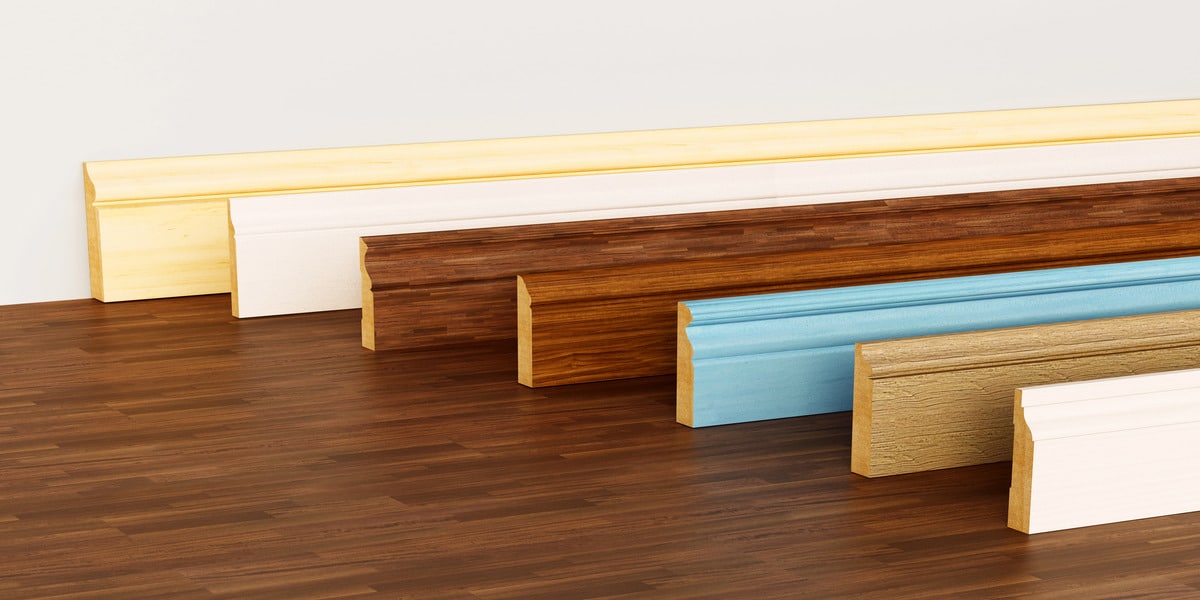Should Hardwood Floors Match Baseboards?

Pairing hardwood flooring with the right baseboard color plays a key role in shaping a room’s overall appearance and flow. Whether you choose to match or contrast your wood floors and trim, the result should reflect the home’s style and support the room’s function. When the baseboards match the flooring, the design often feels seamless and unified—an approach that works particularly well in smaller houses, where clean lines can make rooms feel more open. On the other hand, contrasting tones between baseboards and hardwood flooring can create depth and visual interest, drawing attention to architectural features or defining different spaces.
Deciding between matching or contrasting finishes depends on several factors, including the flooring type, profile of the baseboard, and the room’s layout. Natural light plays a major role in how wood tones appear at different times of the day, while the room’s size and shape can determine whether a light or dark floor feels more appropriate. Matching lighter wood trim with laminate flooring or hardwood in similar tones can create a modern, minimalist effect. In contrast, darker wood trim against light wood floors offers traditional charm and definition.
When upgrading or replacing flooring, nails and gaps around the wood trim are often part of the issue homeowners face. Ensuring a proper fit between the floor and the trim, whether working with hardwood, laminate flooring, or other flooring types, is critical to achieving a clean finish and avoiding long-term maintenance problems. Proper installation also minimizes time spent correcting common alignment problems, especially around corners and transitions.
Choosing the right combination not only affects style but also resale value. Neutral pairings appeal to a broader market and often make staging easier. From the baseboard profile to wood tone and finish, each detail contributes to a design that enhances both the functionality and aesthetic of your home.
Exploring Design Harmony and Visual Flow
The combination of hardwood floors and wood baseboards plays a crucial one in shaping the overall design aesthetic of a room. These elements aren’t just functional—they define the edges of the space and help create visual flow throughout houses. When baseboards and floors work well together, they offer a seamless look that grounds the entire room and enhances its proportions. In contrast, intentional differences in color or texture between the two can establish striking boundaries, especially in rooms with dark walls or bold architectural features.
Baseboard profile and floor texture are central to how the space feels. A couple of inches in height can shift the visual weight of a room, and even the smallest gap or misalignment, often caused by poor installation or exposed nails, can interrupt the design. When installed with care and precision, these components can tie the space together with clean lines and long-lasting appeal. Poor technique, on the other hand, risks damage not just to the look but also to the structural connection between the trim and the floor.
Homeowners often overlook the importance of installation details such as tack strips or hidden nails when updating their floors. These elements ensure secure placement and a smooth finish, but must be handled properly to avoid splinters or instability. Just as important is ongoing care: abrasive cleaners can erode finishes or scuff the surface, especially along the edges where baseboards meet the floor.
A well-executed baseboard and flooring connection adds value to any home. It maintains design harmony across rooms and complements everything from wall color to furniture placement. Whether in modern or traditional houses, thoughtful planning around these materials enhances function while reinforcing the home’s style story.
Contrasting Colors to Define Architectural Elements
In many houses, the combination of hardwood floors and baseboards plays a crucial role in defining the room’s overall style and visual structure. When floor installers use contrasting colors between the floors and trim, it draws attention to architectural lines and gives each design element its own space to stand out. This contrast adds visual depth to the room, helping separate different areas and making spaces feel more layered and dimensional.
Choosing a baseboard color that blends with the walls instead of the floor creates a smooth visual transition from vertical to horizontal surfaces. This technique allows the hardwood floor to stand out on its own, becoming a statement feature in the room rather than just a surface underfoot. Even a few inches of contrast between trim and floor color can make a difference, guiding the eye naturally through the space.
In high-traffic areas, the right type of floor trim becomes even more important. Not only does it anchor the floor tightly in place, but it also protects against everyday damage caused by foot traffic, furniture movement, or cleaning equipment. When the trim is well-fitted and paired with durable hardwood, it supports both the room’s appearance and its function.
Professional floor installers understand that details matter—from precise color coordination to securing the floor tightly against the baseboards. The type of floor trim selected should work with the flooring material, wall color, and traffic patterns of the home. When these components come together with intention, they create a polished, long-lasting design that enhances both beauty and durability.
Coordinating Tones for a Balanced Look
In many houses, creating a visually balanced interior begins with the relationship between the finished floor and the baseboards. Instead of exact color matches, designers often recommend a coordinated approach that lets wood tones and trim colors complement one another. This technique preserves the natural character of each material while maintaining overall harmony across the entire floor area.
The most effective designs consider whether the floor and baseboard share a warm or cool undertone. For example, when oak floors carry a golden hue, floor shoe molding or baseboards in a soft white or cream shade with similar warmth help tie the elements together. This kind of thoughtful pairing makes the room feel connected without being overly uniform.
Professional floor installers know how to keep the floor tight to the wall, using trim and floor shoe molding not only to seal gaps but also to enhance the visual finish. Their experience ensures transitions between the finished floor and surrounding trim are crisp, functional, and aesthetically sound. In larger rooms, or throughout the entire floor of a home, consistent color coordination between flooring and trim reinforces the home’s design continuity.
The result is a cohesive, professionally styled space. Colors blend naturally, each component stands out just enough, and the floor serves as a strong design anchor—proof that careful planning and attention to undertones can bring the best out of both the baseboard and the flooring itself.
Considering Room Size, Lighting, and Style
In interior design, hardwood floors and baseboards play a vital role in defining a room’s overall character. Room size, lighting, and style impact how hardwood floors work with baseboards, influencing whether the combination feels cohesive or visually disjointed. In smaller spaces, matching floors and baseboards creates a seamless surface that helps the room feel more expansive. This smooth transition draws the eye without interruption, making tight areas feel open and unified.
In contrast, larger rooms can support greater contrast between floor and trim without feeling cluttered. A darker baseboard against lighter flooring, or vice versa, adds depth and frames the space, giving each design element its visual weight. Lighting also plays a major role. Natural light highlights the textures and grain patterns in wood, while dim or artificial lighting may soften contrasts and alter how colors are perceived throughout the day.
Architectural style also guides baseboard decisions. Victorian-style houses often benefit from more ornate and contrasting trim that reflects their period detail, while contemporary homes usually favor minimalism, where matched floors and baseboards support a sleek, uninterrupted look. These stylistic influences, when combined with room size and lighting, help create a balanced design that reflects the room’s function and the homeowner’s vision. Thoughtful coordination between hardwood floors and baseboards ensures the space feels intentional, polished, and tailored to its setting.
Personal Preference vs. Resale Value Considerations
Choosing whether to match hardwood floors with baseboards or use contrasting styles often comes down to a balance between personal taste and long-term property value. Homeowners looking to express a bold design style may lean toward strong color differences, using contrast to highlight architectural elements and make a statement. However, when it comes to appealing to a broader real estate market, neutral and closely coordinated floor and trim colors tend to hold more value.
Real estate professionals consistently recommend subtle, classic combinations of hardwood floors and baseboards. This approach presents a unified and timeless look that resonates with more buyers, making it easier to sell the home at a higher price point. In modern homes, well-executed contrast can add visual interest and even increase home value, provided it aligns with the home’s architecture and appeals to the target demographic.
Color coordination plays a crucial role in reinforcing a home’s design style and can subtly influence how spacious or refined a room feels. Smart homeowners consider not only what matches their current aesthetic but also what will support their property as a long-term investment. Design decisions that reflect both current style preferences and future resale goals help ensure the home remains both visually appealing and market-ready.


















